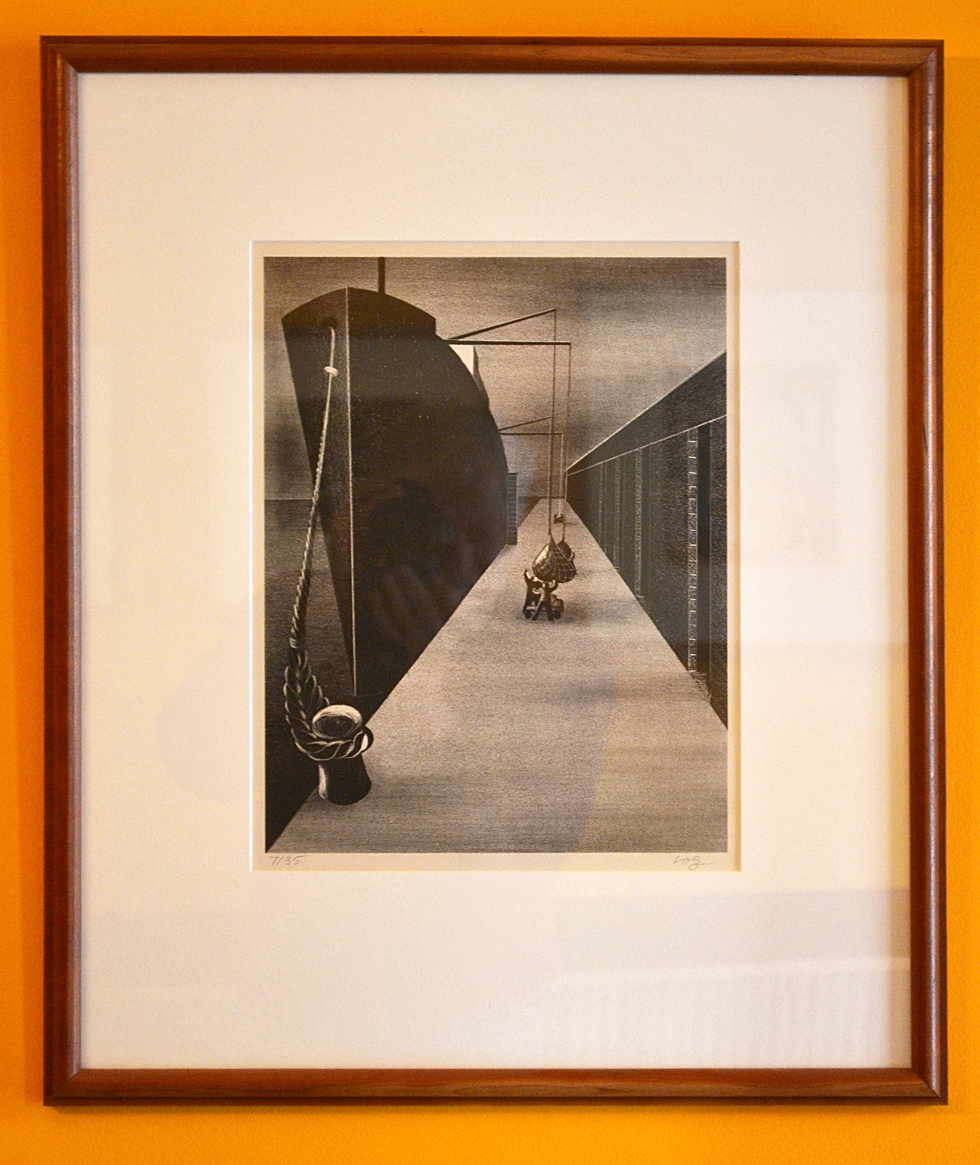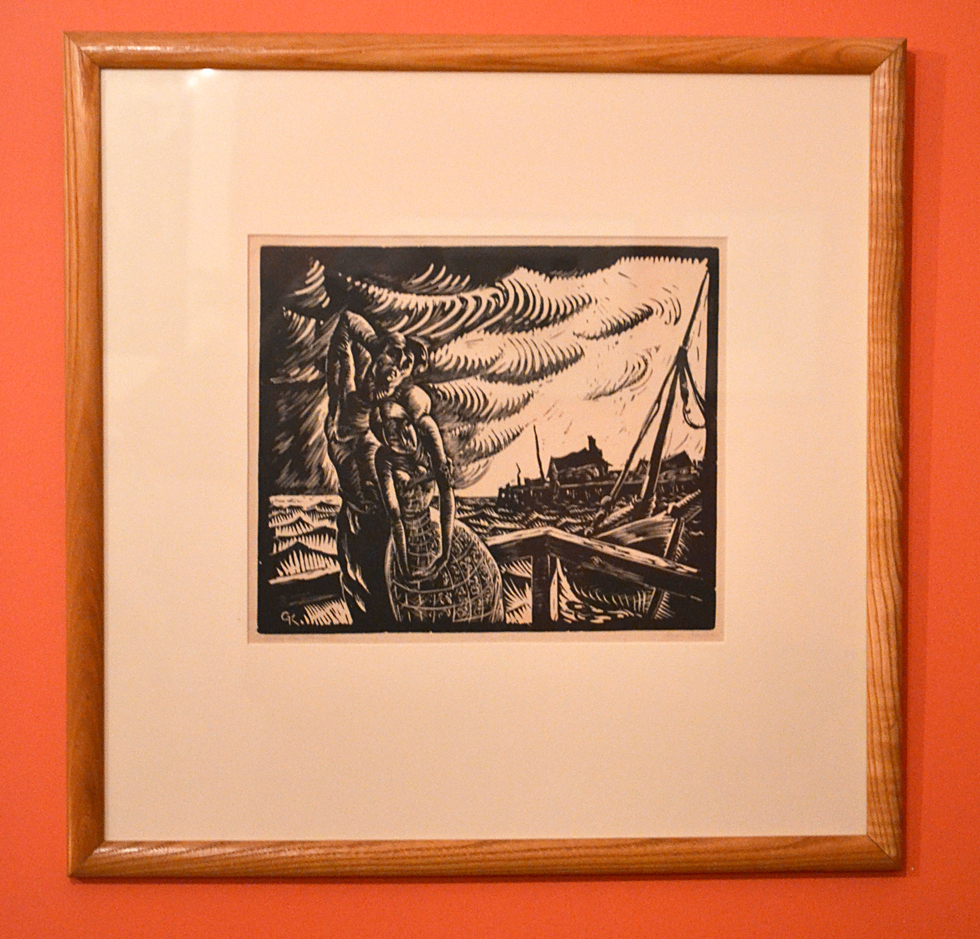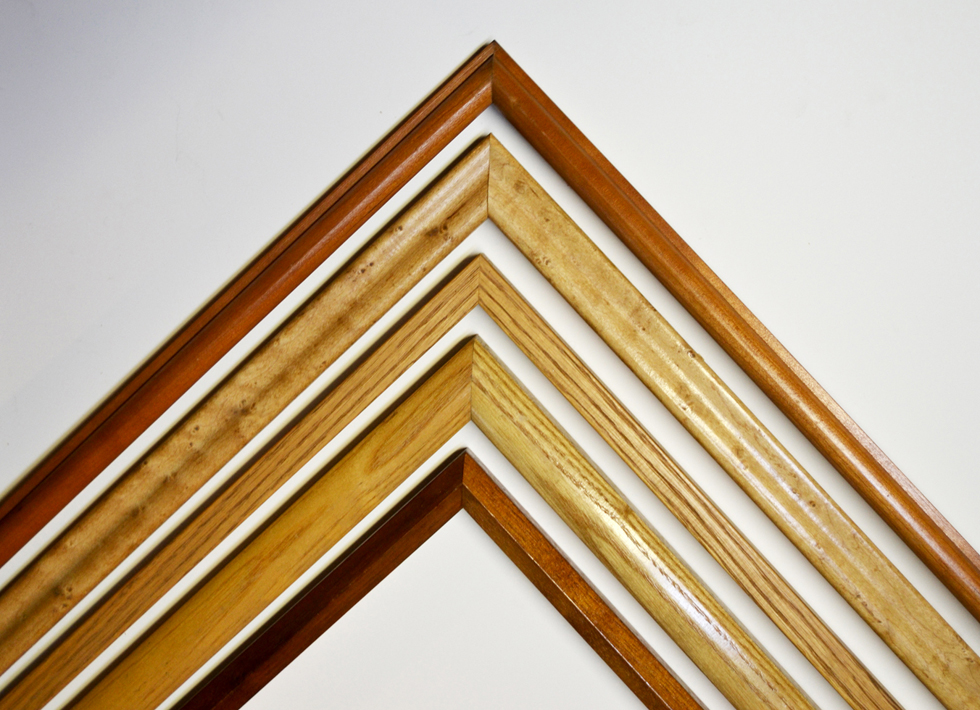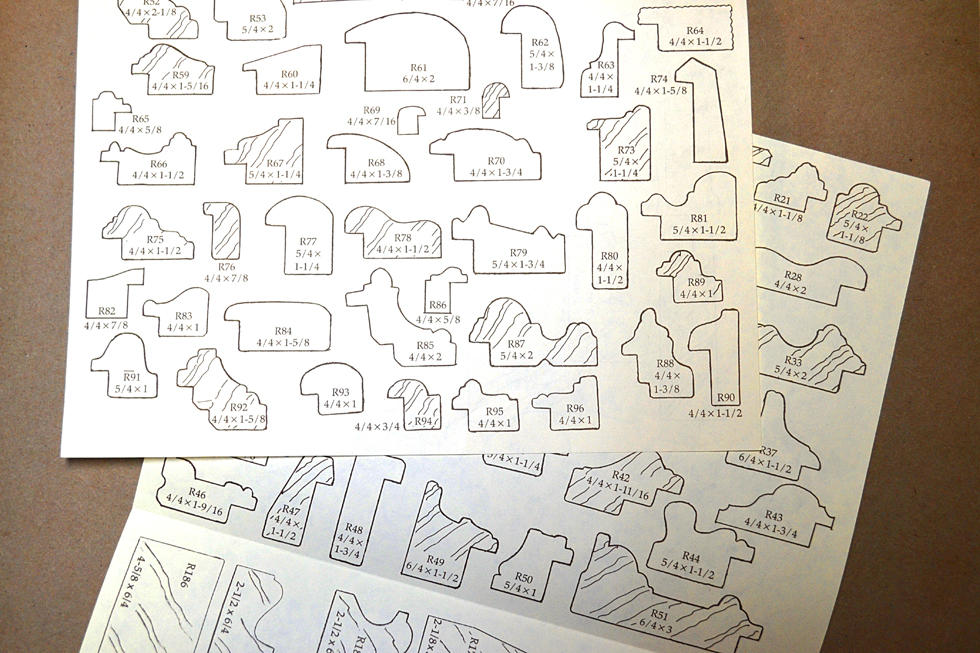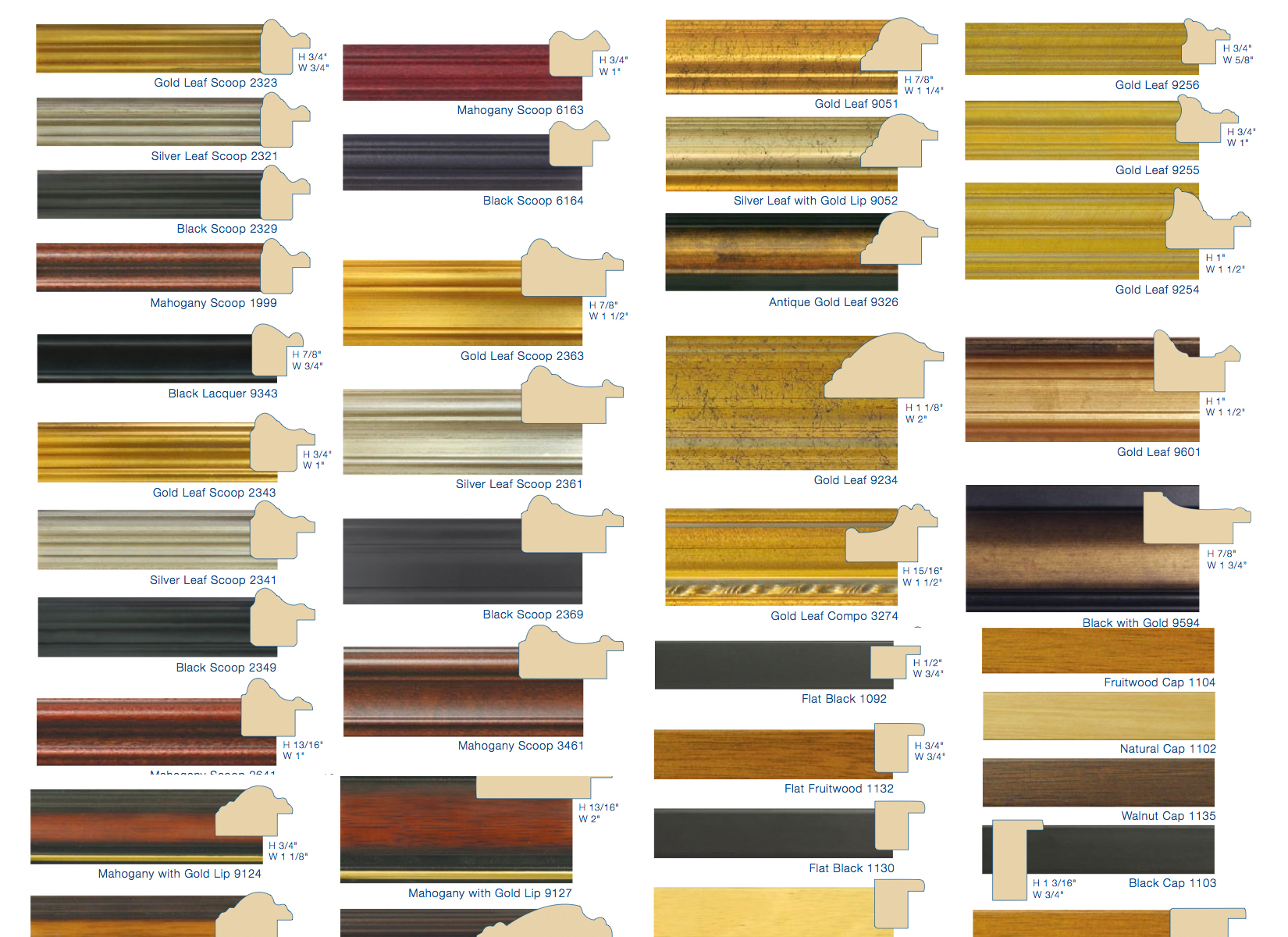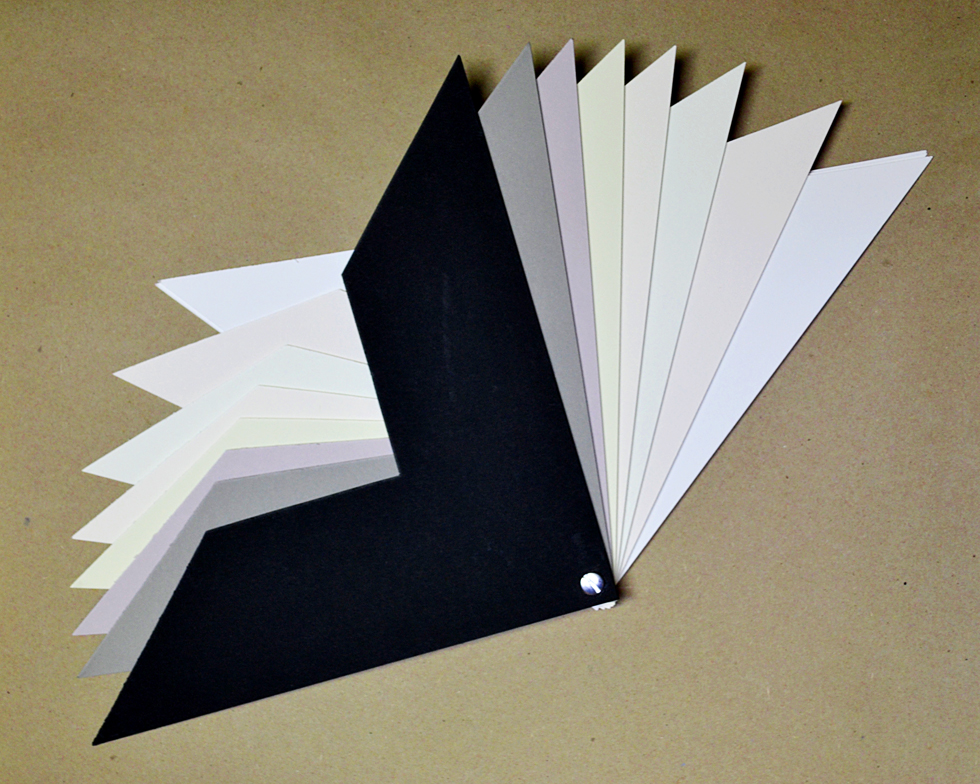Your photographs, prints, drawings and paintings on paper need to be displayed in the most attractive fashion, with the protection of the artwork always in mind.
In the decades that I’ve been framing my watercolors for exhibition or framing my print collection for the house, I’ve come to repeat this mantra: keep it simple. Let the artwork do the speaking, not the framing. For me this has meant a hardwood molding with a slender profile and wide museum board mats.
Here are two framed prints from my collection. Below is a woodcut by Jan Kolski called After the Storm. The frame is ash with a shellac finish; it has a broad rounded profile. To the right is a lithograph by Herman Volz called Ship & Dock. Its frame is cherry with a flat outer edge and a half-round inner profile, also with a shellac finish. Both prints are matted in 100% rag (museum board) mats.
Milton W. Bosley Co. in Glen Burnie, MD, has custom made the moldings I’ve used. Here are some of the woods they offer: (from top to bottom) cherry, bird’s eye maple, oak, ash and mahogany.
And below is a sampling of Bosley molding profiles. Furthermore you can design your own moldings, increase the depth of the rabbet for instance so you can to create a shadow-box frame. Bosley moldings need to be custom ordered.
But many of you may very well prefer selecting from the hundreds of attractive moldings offered by Furst Bros. in South Baltimore. They make about half of the moldings on display there. The variety is quite outstanding–from simple elegant one in black to elaborate metal-leaf ones–and they keep all of their moldings in stock. Here is a link to their online molding catalog: http://www.furstbros.com/wp-content/uploads/2013/02/moulding-catalog-2013.pdf
Here are just a few of their offerings:
While I’ve restricted myself to using off-white matboard, Strathmore Paper offers museum board as dark as black. Here’s a selection of boards.
There are many options for glazing. I’ve tended to use single-weight regular glass for framing my prints as well as my small to mid-size paintings. This glazing is fine for artwork that will be kept out of direct sunlight or long periods of artificial light. But you may very well wish to use non-glare glass or glass that blocks harmful UV light. Plexiglass can be an option for larger frames since it’s much lighter than glass.
Here are important considerations regarding cost. When ordering molding from Bosley, there’s a $50 fee for buying less than 150′ of a given molding profile (although you can use two or more woods, say cherry and ash, in an order). So you can save money by framing several pieces at once. There’s much more flexibility when ordering from Furst. Bros. since their moldings are in stock with no add-on fees for small amounts. You can also save money by using the same tone of mat board for all images. Also I discourage using double mats. It’s extra materials and work that do not enhance a frame. And use the glazing that’s most appropriate for your artwork and where it will be hung. You may not need that most protective glazing money can buy.
I hope you will entrust me to give for works of art the presentation they demand and to use the conservation materials they need. Please contact me at p1m1@comcast.net


